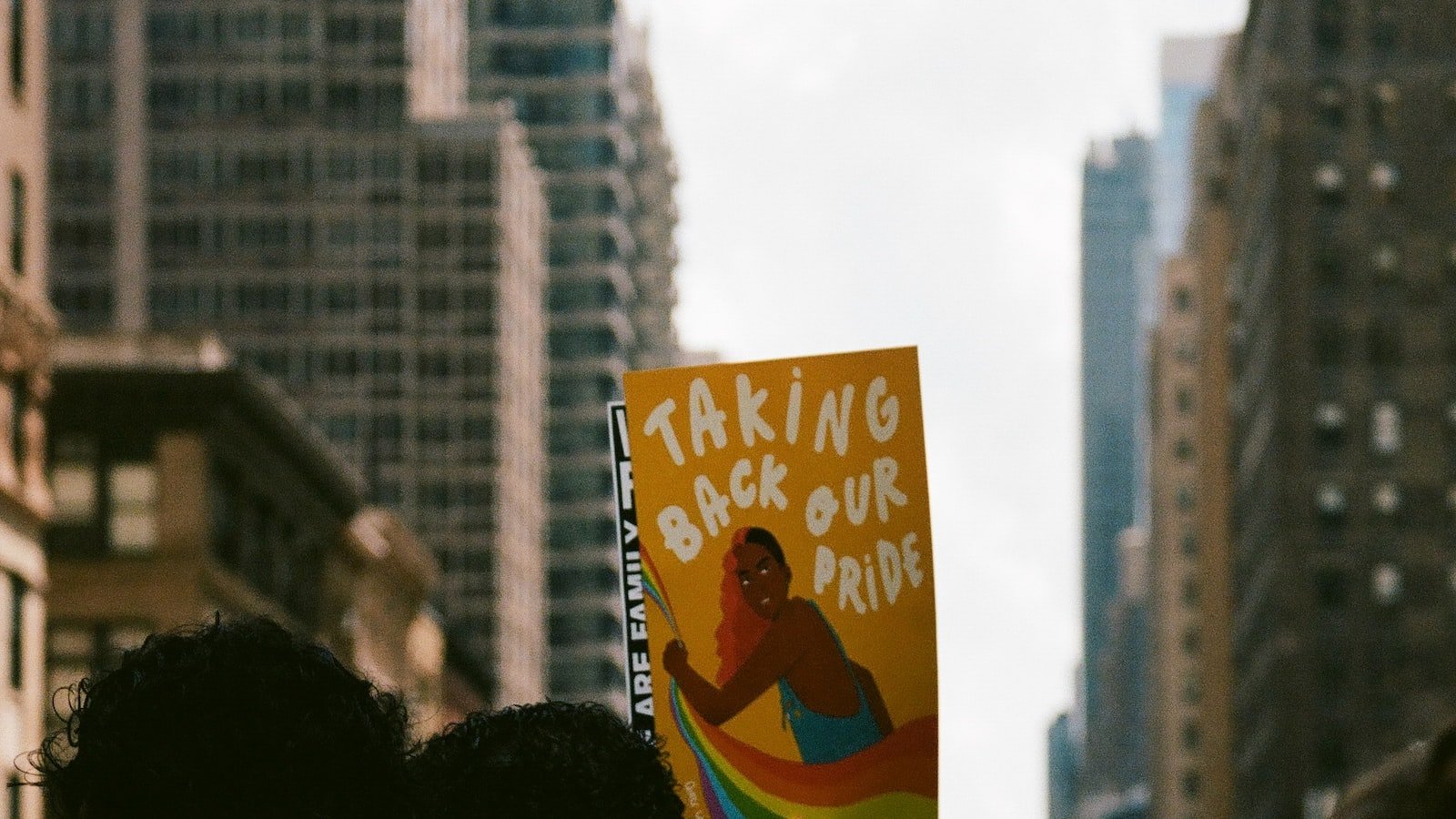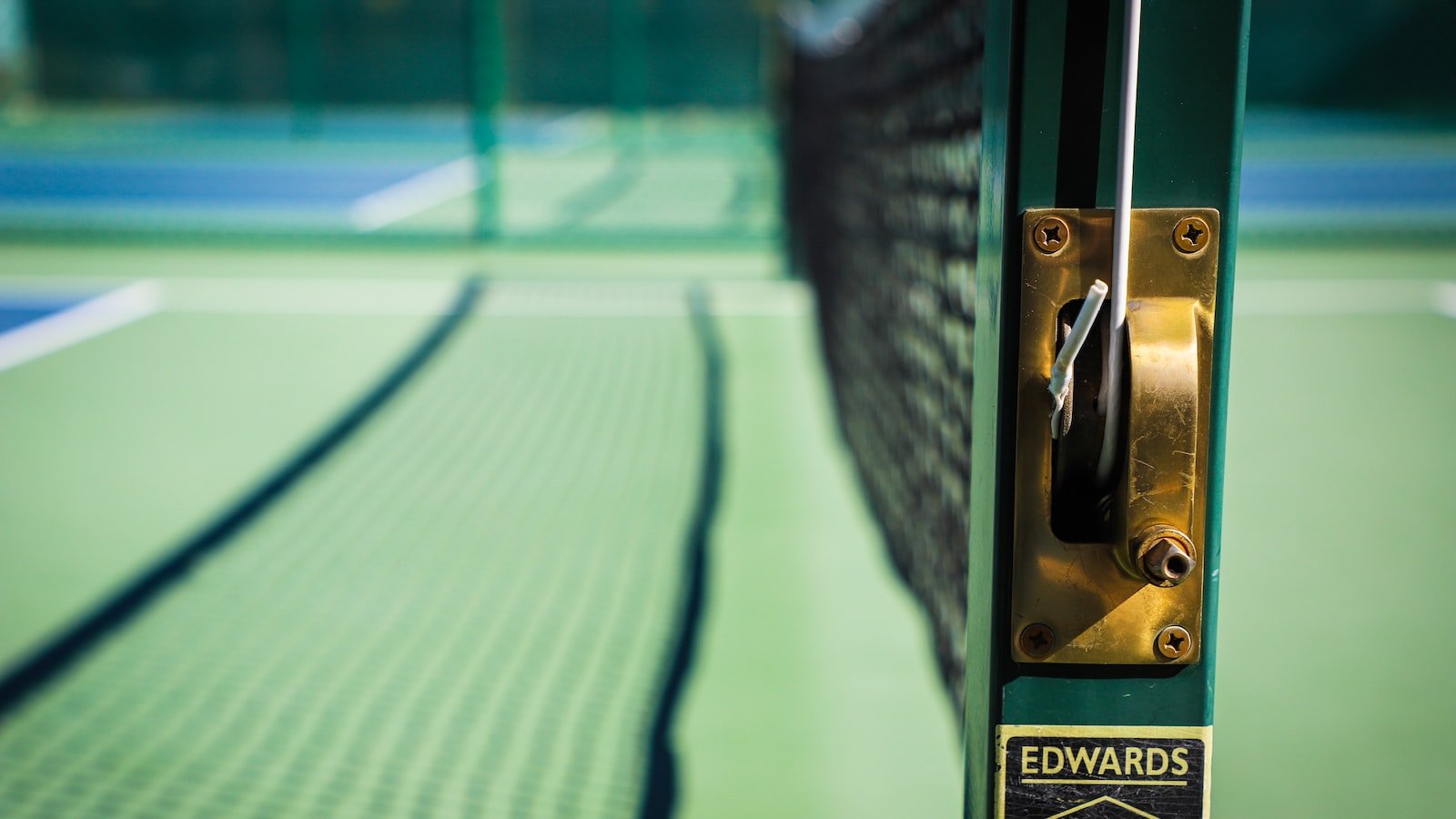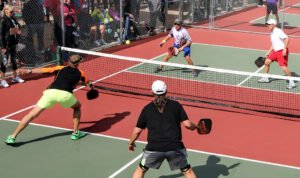Paddle in hand, sweat glistening under the summer sun, the players of a seemingly ordinary pickleball game gather on the court. Yet, beyond the colorful lines marking boundaries and the rhythmic thud of paddles connecting with the hollow plastic ball, there is a silent revolution taking place in this unassuming setting. With each serve and unexpected, agile move, the world of pickleball embraces a spirit of inclusivity that sets it apart from many other sports; it is leading the charge in creating a harmonious space for the LGBTQ+ community. In this article, we explore the awe-inspiring journey of LGBTQ+ inclusion within the world of pickleball, and how this humble sport is getting it unequivocally right.
Table of Contents
- The Rise of LGBTQ+ Participation in Pickleball
- Creating an Inclusive Environment: Advocacy and Education
- Challenging Stereotypes: Breaking Down Gender Norms in Pickleball
- Promoting LGBTQ+ Visibility: Representation in Pickleball
- Fostering Allyship: Strategies for LGBTQ+ Inclusion in Pickleball
- Q&A
- The Conclusion

The Rise of LGBTQ+ Participation in Pickleball
Pickleball, a popular racquet sport, has witnessed a remarkable rise in the participation of LGBTQ+ individuals in recent years. This inclusive and welcoming community has found a home in pickleball, creating a space where people can connect, compete, and be themselves.
One of the reasons behind this surge in LGBTQ+ participation is the unique environment that pickleball offers. Unlike other sports, pickleball emphasizes inclusivity and encourages players of all skill levels to join in the fun. This inclusive nature has attracted a diverse range of individuals, including those from the LGBTQ+ community who may have felt excluded or unwelcome in other sports.
The LGBTQ+ community has formed close-knit networks within the pickleball community, providing support, friendship, and a sense of belonging. Through LGBTQ+ pickleball leagues, tournaments, and social gatherings, participants can connect with like-minded individuals, forming lasting bonds that extend beyond the pickleball court.
With the rising popularity of pickleball and the increasing visibility of LGBTQ+ representation in the sport, this trend is expected to continue. As more LGBTQ+ individuals discover the joy of pickleball, the community will further flourish, promoting diversity and acceptance both on and off the courts.

Creating an Inclusive Environment: Advocacy and Education
Advocacy and Education for an Inclusive Environment
In order to create an inclusive environment, it is crucial to promote advocacy and education. Advocacy entails speaking up and taking action on behalf of marginalized communities. Through education, we can increase awareness, understanding, and empathy, allowing us to build a more inclusive society.
How can we advocate for inclusivity?
- Stand up against discrimination and inequality. Use your voice to challenge biased behaviors and attitudes whenever you encounter them.
- Support organizations and initiatives that strive for inclusivity. By donating time, resources, or funds, we can collectively make a difference.
- Engage in conversations and discussions to educate others about the importance of inclusivity. Sparking dialogue helps to address misconceptions and foster empathy.
Why is education essential for creating an inclusive environment?
- Education breaks down barriers and dispels stereotypes. It enables individuals to embrace diversity and recognize the value of different perspectives.
- By incorporating inclusive perspectives and diverse voices into curricula and teaching materials, we can empower future generations to create a more inclusive society.
- Through training programs, workshops, and awareness campaigns, we can strengthen understanding and empathy among individuals and communities.
By advocating for inclusivity and embracing educational opportunities, we can actively contribute to the creation of an inclusive environment where everyone feels valued and respected.

Challenging Stereotypes: Breaking Down Gender Norms in Pickleball
When it comes to sports, gender roles and stereotypes often become deeply ingrained, dictating who can play and excel in certain activities. However, in the world of pickleball, we are witnessing a refreshing shift in this narrative. Pickleball, a fast-growing sport that combines elements of tennis, badminton, and ping pong, is breaking down gender norms and challenging stereotypes in ways that are reshaping the game.
One of the most remarkable aspects of pickleball is its inclusivity. Unlike many traditional sports, there are no restrictions on age, physical ability, or gender. Men and women of all ages and skill levels can compete together on an equal playing field. This diversity creates a unique dynamic on the court, where gender becomes irrelevant, and talent and strategy reign supreme.
In addition to inclusivity, pickleball is also encouraging a change in perception when it comes to traditional gender roles in sport. With the sport gaining popularity, we are witnessing an increasing number of women players who are challenging stereotypes and proving that they have just as much skill, strength, and agility as their male counterparts. The sport is empowering women to break free from the limitations imposed on them, offering a platform for them to showcase their abilities, both on and off the court.
As pickleball continues to grow, so too does its ability to challenge long-held gender norms. By providing an inclusive space for players of all genders, ages, and abilities, the sport is rewriting the rules and paving the way for a more equal and fair sporting landscape. As we witness this evolution, it becomes clear that pickleball is not just a game, but a powerful catalyst for change.
Promoting LGBTQ+ Visibility: Representation in Pickleball
As the world evolves towards a more inclusive and accepting society, it’s important to recognize the role that various sports can play in promoting LGBTQ+ visibility. Pickleball, a fast-growing racquet sport, is no exception. By fostering an environment that embraces diversity and representation, the pickleball community can contribute to breaking down barriers and creating a safe space for LGBTQ+ individuals.
One way to promote LGBTQ+ visibility in pickleball is by actively encouraging participation and representation in tournaments and events. Organizers can work towards creating inclusive policies and fostering a welcoming atmosphere for players of all backgrounds. By ensuring equal opportunities for LGBTQ+ individuals to compete and showcasing their talents, pickleball can become a platform to celebrate diversity and challenge stereotypes.
Furthermore, education and awareness are key in promoting LGBTQ+ visibility in any sports community. Pickleball organizations can collaborate with LGBTQ+ advocacy groups to provide resources, workshops, and training sessions to players, coaches, and officials. These initiatives can help cultivate a more knowledgeable and empathetic environment, dispelling misconceptions and prejudices while fostering a stronger sense of community.
Ultimately, by actively promoting LGBTQ+ visibility and representation in pickleball, the sport can become a vehicle for positive change. It has the power to unite individuals from diverse backgrounds and create an inclusive space where everyone feels comfortable and celebrated. Let’s come together and embrace the vibrant and diverse pickleball community, ensuring that every player has the opportunity to be seen and heard, regardless of their sexual orientation or gender identity.
Fostering Allyship: Strategies for LGBTQ+ Inclusion in Pickleball
In an effort to create a more inclusive pickleball community, it is crucial that we actively foster allyship and ensure the LGBTQ+ community feels welcome and represented. LGBTQ+ inclusion in pickleball not only promotes a sense of belonging for individuals, but also enriches the sport by embracing diversity and broadening perspectives. Below are some strategies we can implement to foster allyship and promote LGBTQ+ inclusion:
- Educate ourselves: Taking the initiative to educate ourselves about LGBTQ+ issues and terminology is essential in fostering allyship. This can include attending workshops, reading literature, or seeking out personal stories from LGBTQ+ individuals within the pickleball community. By understanding the experiences and challenges faced by the LGBTQ+ community, we can be better allies and advocates for change.
- Create and promote safe spaces: Establishing safe and inclusive spaces within pickleball clubs and tournaments is paramount. This can involve implementing and enforcing anti-discrimination policies, educating members about appropriate language and behavior, and designating an LGBTQ+ liaison within the organization. Creating a welcoming environment ensures that LGBTQ+ individuals feel comfortable participating and expressing their authentic selves.
- Use inclusive language: Language plays a powerful role in promoting LGBTQ+ inclusion. Using appropriate pronouns, avoiding heteronormative assumptions, and refraining from using derogatory slurs or jokes are simple yet impactful ways to create an inclusive atmosphere. By consciously choosing inclusive language, we show respect for all individuals, regardless of their sexual orientation or gender identity.
- Advocate for LGBTQ+ visibility: Representation matters. Encouraging LGBTQ+ individuals to join, participate, and hold leadership positions within pickleball organizations helps to foster a sense of belonging and equality. Additionally, visible LGBTQ+ representation through signs, banners, and inclusive promotional materials sends a strong message that the sport is for everyone.
By regularly implementing these strategies, we can foster allyship and create a more inclusive environment for LGBTQ+ individuals within the pickleball community. Together, let’s celebrate diversity and promote equality, both on and off the court.
Q&A
How has pickleball become more inclusive for the LGBTQ+ community?
Pickleball has embraced LGBTQ+ inclusion by promoting diversity through educational initiatives, implementing inclusive policies, and fostering a welcoming environment for all players regardless of their sexual orientation or gender identity.
What efforts have been made to educate players on LGBTQ+ inclusion?
Pickleball organizations have organized workshops, training sessions, and informational campaigns to raise awareness about LGBTQ+ inclusion, teaching players about sensitivity, respect, and the importance of creating an inclusive sports community.
Have there been any policy changes to ensure LGBTQ+ inclusivity in pickleball?
Absolutely! Many pickleball organizations have updated their policies to explicitly include LGBTQ+ players, banning any form of discrimination based on sexual orientation or gender identity and ensuring that all players can enjoy the sport without fear of prejudice.
What steps have been taken to create a welcoming environment for the LGBTQ+ community?
Pickleball communities have implemented initiatives to foster a safe and welcoming environment, such as establishing LGBTQ+ ally programs, offering diversity and inclusion training for administrators, and promoting LGBTQ+ events and leagues within the sport.
Are there any prominent LGBTQ+ role models or advocates in the pickleball community?
Yes, there are! Some LGBTQ+ players and advocates have emerged as role models, using their platform to promote inclusion and equality in pickleball. Their visibility and support have been vital in fostering a more inclusive atmosphere within the sport.
How has LGBTQ+ inclusion positively impacted the pickleball community?
LGBTQ+ inclusion has brought numerous benefits to the pickleball community, including increased diversity, a more welcoming and tolerant environment, and a stronger sense of unity among players. It has allowed individuals to feel more comfortable participating and enjoying the sport without fear of discrimination.
What challenges does the pickleball community still face in achieving full LGBTQ+ inclusion?
While progress has been made, there are still challenges that the pickleball community faces regarding LGBTQ+ inclusion. Some players may still hold discriminatory views or face resistance to change, necessitating ongoing initiatives to promote education, awareness, and a more inclusive culture.
How can other sports learn from pickleball’s approach to LGBTQ+ inclusion?
Other sports can learn from pickleball by adopting inclusive policies, implementing educational programs, and cultivating an environment that values diversity. It’s crucial to create safe spaces where LGBTQ+ athletes can participate fully and feel accepted, leading to more inclusive and supportive sports communities overall.
The Conclusion
As we bring our exploration to a close, one thing is abundantly clear: the world of pickleball is setting a remarkable example in LGBTQ+ inclusion. From its humble origins to its explosive growth, the sport has continually embraced diversity and fostered an environment where everyone feels welcome.
Through the incredible stories we’ve delved into, we have witnessed the power of pickleball as a catalyst for change, breaking down barriers and shattering preconceptions. LGBTQ+ players and allies have formed tight-knit communities within this vibrant sport, finding solace, companionship, and a safe space to openly express themselves.
But let us not forget the tireless efforts of those who have championed LGBTQ+ inclusion in the ongoing growth of pickleball. Organizers, athletes, and enthusiasts alike have worked hand in hand to ensure that the spirit of acceptance reaches every corner of the court. From implementing gender-neutral playing divisions and inclusive policies, to hosting tournaments and events that emphasize openness and respect, the pickleball community is proving that they are not simply playing a game but forging a path towards a more inclusive world.
Furthermore, let us acknowledge the invaluable lessons we can all learn from the pickleball community’s approach. By nurturing a culture that celebrates authenticity and shunning discrimination of any kind, they have established the groundwork for other sports and communities to follow suit. Through the lens of this remarkable sport, we see that acceptance knows no boundaries – it is an unshakeable and undeniable force that can transform lives.
As we bid farewell to this exploration of LGBTQ+ inclusion in pickleball, let us carry forth the inspiration it has instilled within us. Let’s challenge ourselves, both on and off the pickleball court, to embrace diversity, eradicate prejudice, and foster a spirit of inclusivity. Remember, in this incredible world of pickleball, everyone has a place at the net, ensuring that no one feels left out or on the sidelines. Let us continue to amplify the voices of the LGBTQ+ community and celebrate the unity that makes pickleball a shining beacon of acceptance.
So, let us take to the pickleball courts, paddle in hand, and honor the commitment made by the pickleball community to embrace LGBTQ+ individuals wholeheartedly. Together, we can stand as a testament to the power that sport possesses in bringing people together, breaking barriers, and creating a future where love and acceptance reign supreme.
As an affiliate, my content may feature links to products I personally use and recommend. By taking action, like subscribing or making a purchase, you’ll be supporting my work and fueling my taco cravings at the same time. Win-win, right?
Want to read more? Check out our Affiliate Disclosure page.




